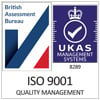We have collected some symptoms that reveal that your recruitment processes are getting scarily old fashioned. If you don’t want the nightmare of inefficiency to come true for your business, check them out and take action now!
1. The threat of an unreliable database – If you can’t trust your internal database, who can you trust?For a recruitment agency, the candidate database is key to business success, thus populating it with accurate and relevant information is a must in order to make it work to full capacity and ensure commercial productivity. However, there are three main threads to the reliability of your data base:
- Scarce information – very little information is input when the record is created. Just the name, contact details and the resume is attached.
- Duplication – On average 60-70% of resumes processed are updates to existing data that you already have.
For you to be able to trust your database, it is not just about increasing the number of records it contains but making sure that these records are unique. Your vacancy matching system has to be able to recognise if an incoming candidate already exists in the database and update it automatically with rich structured data; full contact information, full education and work history and your own unique skills taxonomy.
2. The torture of manual work – Is there anything more painful in recruitment than having to type CV data into your database?
Manually updating candidates’ records is literally a pain in the… hands! And also a terrible waste of time. If you take recruitment seriously and want to stay ahead of the competition, you have to automate candidate data loading ASAP.
CV parsing technology can do this task for you by instantly populating your database with the candidate data in seconds. Each time you receive a CV from any mailbox, Capture creates a new record in your database and populates all the required fields. This means up to 95% direct labour cost saving compared to alternative Candidate Data entry methods and no more CV backlogs or delays waiting for CVs to be loaded to the CRM database.
3. The nightmare of numerous external sources – The moment when you are lost among too much information.
Today recruiters can’t complain about a lack of candidate information, but sometimes too many sources. There is a huge amount of data out there, half of which may be redundant but the other half is relevant and ready to be used. In a competitive market where having the business edge is key, recruiters need to do all they can to obtain a true candidate profile. However, chances are, if the search process is not properly structured and systematised, recruiters can easily “get lost”.
Intelligent technology that readily collates candidate details from multiple sources – job boards, resumes, social media and previous agency interactions - in one central location and gives you a single shortlist of the most suitable candidates, can save you from the endless log in nightmares and also loads of time.
4. The dangers of blind advertising spend – When you know you are spending money on advertising but losing sight of its return.
A large number of today’s external sources have its pros and cons. You may be receiving a lot of CVs, but somewhere along the way a cost can be associated with each one. Isn’t it worth measuring the return you receive back from job boards? Being able to track which sources get you more useful CVs is key to understanding which of them are delivering the best candidates and focus your investment on them rather than on the low performing ones.
As a conclusion, if you don’t want to get lost in the dark scary valley of recruitment inefficiency, the first monster you have to kill is a technological demon by improving your data loading processes and your search capabilities. You can delay this battle as much as you want, but the longer you take in upgrading your recruitment process to the next level, the more placements you are losing out to your competitors.
Happy Halloween!


